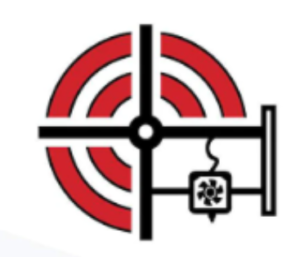In these early innings of the AI boom, many market analysts have expressed concern that AI spend has gotten too far ahead of the technology’s proven ability to deliver significant value once it’s implemented into enterprises’ workflows. While such concerns are certainly justified given the levels of investment and attention that AI has received in the last few years, there is, nonetheless, mounting evidence that certain industries are already achieving measurable gains attributable to AI adoption.
Amongst the industries at the head of the AI adoption curve, two that have seen the most benefit are software and product development. The key seems to be the extent to which an enterprise reshapes its core operations around AI: as an article from Bain & Company notes, “…reaping value from AI requires more than just simply conducting trials or deploying the technology. More so than previous disruptions, such as the Internet or cloud, AI requires changes in business processes.”
The product lifecycle management (PLM) firm Duro, based in Los Angeles, has recently undergone a transformation that intertwines all of the factors mentioned above. The company has just relaunched its flagship software PLM platform as Duro Design, entirely rebuilt to be both cloud- and AI-native, and API-first. Duro claims that this drastically simplifies the user experience (UX), accelerates the design process, and reduces the costs involved in launching new products.
While Duro is not exclusively an additive manufacturing (AM) software, AM has played a key, multifaceted role in the company’s evolution. For instance, one of Duro’s co-founders, Kellan O’Connor, helped design SpaceX’s Falcon 9 booster engines, a component whose design process has been heavily dependent on AM. Thanks in part to that background, Duro has excelled in the aerospace and defense market, with one of its customers, Australia’s Gilmour Space, using AM extensively for both rocket engines and satellites.
In an interview with Michael Corr, the company’s other co-founder — and also its CEO — one of the topics that the engineer discussed with me was how important the philosophy of rapid hardware iteration has been to Duro’s business model:
“Leading up to Duro’s founding in 2017, my co-founder and I recognized that there was a cultural shift happening amongst hardware teams. They weren’t comprised of the same kinds of engineers that existed when Kellan and I first entered the workforce,” Corr began. “The new generation was much more adept at software skills.
When I started my career, hardware engineers had no business to learn how to write code. So as more and more hardware teams were becoming increasingly skilled at writing software, in addition to their mechanical and electrical skills, we saw a huge opening for a product like Duro, which could give hardware developers more seamless control over the software functions they were using to design new products.
At the time we launched, and still in the current environment, the hottest categories in terms of demand for quicker product development cycles were in aerospace and defense, autonomous vehicles, quantum computers, warehouse robots, etc. A lot of startups were entering those markets, and they were very committed to rapid iteration. We were a natural fit for those types of companies, because of the younger, more software-minded hardware engineers they typically employed, and because those companies needed to move fast.
Even at larger companies, though, the new product introduction (NPI) teams tended to have similar profiles to the startups we were making traction with, so we’ve made headway with those sorts of businesses, as well.”
With that context in mind, it’s easy to see how Duro was in an ideal position to observe how AI was enhancing the productivity of hardware design teams, in addition to Duro’s own productivity as a software developer. So, last year, the company made a decision: it would relaunch its flagship product as an AI-native platform.
“AI came in and gave us this huge turbo-boost in terms of our ability to continue to implement our original vision,” Corr told me. “We also had five years of empirical experience working with customers and seeing the trends of the market, and noticing additional innovations to our platform that the market was demanding.
Compared to when Duro was first launched, there are simply far more companies now taking this software-centric approach to launching hardware. One thing that we were seeing more and more when we were talking to prospective customers was that many of them had already built their own software tools internally. We saw enormous demand from OEMs who wanted to have the ability to create their own software capabilities.
When I started my career, that wasn’t a thing. You’d always hire an outside consultant or a specialized service team. OEMs now want to do that on their own. At least in this market, third-party consultants and expensive service companies for software development is a dying business model.”
Large language models (LLMs) not only gave Duro the ability to improve UX, but in fact facilitated the company’s very ability to execute a full relaunch in such a short timeframe:
“About a year ago, we realized we had this unique opportunity to take all of the lessons we’d learned from the previous five years,” said Corr. “And leveraging AI for our own development allowed us to relaunch at a much faster pace than would’ve been the case, otherwise.
“What’s unique about the relaunch is the fact that AI isn’t just a bolt-on. I think we’re in an enviable position compared to our competitors because we’re still small enough to where we can do such a major refactoring compared to legacy providers. They’re too far down the road already to be able to do that.
“It’s subtle, but it’s an important distinction that AI is natively built into the platform now: users will have easier extensibility, we’ll be able to add features faster than our competitors, and then there’s the more obvious things like users being able to use AI to support natural language search.
“What I think is most exciting, though, is AI-enabled process analysis. When customers change their content in our platform, they’re making iterations of their CAD designs, they’re submitting for change orders, they’re rejecting those change orders with comments, or approving them with comments.
“All of that is fantastic content that AI can analyze and create value out of. So we’re using AI to analyze all that content to be able to recommend changes, or analyze a proposed change, and say, based on the history, whether the proposed change is likely to succeed or fail.”
Ultimately, all the streamlining of workflow taking place here should lead to a faster path for better products, especially when combined with rapid iteration cycles enabled by AM. And putting AI-native design platforms in the hands of younger generations that are already familiar with LLMs could help drastically reduce the difficulty of training new workers to use 3D printers and other advanced manufacturing equipment.
In addition to finding the right applications fits, like software and product development, and incorporating AI into the foundation of the process as opposed to simply throwing it on as an additional feature, the most important takeaway here in terms of succeeding with AI seems to be to meet the technology where it’s currently at:
”When it comes to AI, what I think is mature and ready-to-use, today, is analysis of data,” Corr reiterated. “You can use it to generate content, or to analyze content, and I think that as of now, the latter use is much more mature and much more reliable. Duro’s position is that as long as you give us access to any raw content, we can make value out of it.
I think generative AI, like for automating the generation of designs, will eventually mature and grow reliable enough to be a routine part of the hardware design process. But in terms of immediate value-add, the important use-cases are clearly in data analysis.”
For some time, at least in the manufacturing sector, AI can be expected to create more demand for new workers and skills, in contrast to the assumption that it will rapidly eliminate jobs. Given all the advantages that a company like Duro promises, it even seems likely that AI may create a more enjoyable experience for the jobs it affects most directly.
Images courtesy of Duro.
Subscribe to Our Email Newsletter
Stay up-to-date on all the latest news from the 3D printing industry and receive information and offers from third party vendors.







